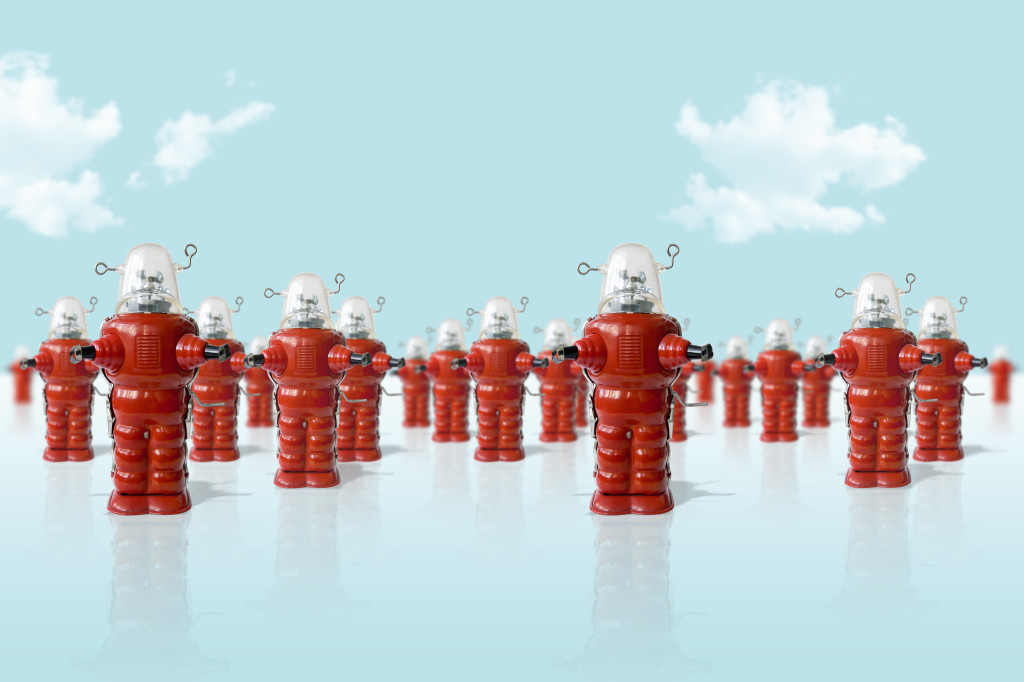The 5th International Conference on Biomimetic and Biohybrid Systems will be held this year in beautiful Edinburgh, Scotland,18 -22 July. The three-day event, organised by the Convergent Science Network, will be hosted at a fantastic venue consistent with the spirit of the conference, the Dynamic Earth: a 5 stars visitor experience with incredible interactive technology to learn about natural events and much more….
Category Archives: Robots and Research
An ecology of robots built using principles of biomimetics
More then ever scientists are using a nature-inspired approach to build biomimimetic robots. Developed after through investigation of biological systems, these robots are a wonder of engineering and artificial intelligence research.
Living Machines 2015
Article by Michael Szollosy
 Just last week, La Pedrera, Barcelona, has hosted the Living Machines 2015, the 4th International conference on biomimetics and biohybrid systems.
Just last week, La Pedrera, Barcelona, has hosted the Living Machines 2015, the 4th International conference on biomimetics and biohybrid systems.
On Anthropomorphisation
Article by Michael Szollosy
“The desire to anthropomorphise, the need to connect, is powerful, and that is why this thing is going to sell.”
So says Daniel Graystone, inventor and CEO of Graystone industries in the American network series Caprica. The prequel to the 2004 remake of Battlestar Galactica, Caprica tells the story of how the genocidal Cylons came into existence. Graystone is trying to develop a robot for use by the military, but realises that his will be more successful if his robots look and act like human beings. First, it needs to be pointed out – evidently with some frequency – that bipedal robot soldiers are probably the most inefficient way that robots can be used in military combat, and not at all what a truly sophisticated artificial intelligence would use to take over the planet and enslave the human race.
But given that, Graystone makes a very important point: there is a very deeply-rooted impulse to anthropomorphise – to attribute human qualities to things that are not human – and this seems to be a big factor in the development of human-robot interactions. Continue reading
2015 the year of Personal Robots?
Article by Michael Szollosy
Amidst all the talk about the Big Trends in tech for 2015 – driverless cars apparently on the horizon, and of course the VR revolution will arrive just in time for next Christmas – is talk of personal robotics: more than simple machines, these are robots that promise to organise our lives. Through the power of ‘emotional engines’ and other advances in Artificial Intelligence (some genuine, some less revolutionary than marketing agents would have us believe), these are robots that will become our companions, or perhaps even trustworthy friends.
The key, of course, to the up-take of any new technology – beyond the tech-enthusiasts that gobble up anything new and innovative (e.g. Glassholes) – is how useful a product will be to the wider consumer market.
This cuttlefish robot is actually better than cuttlefish
A new marine robot, called Sepios, has recently joined the ever-growing robotic animal kingdom. Built by a group of students from Switzerland’s ETH Zurich, this biomimetic robot was inspired by yet another marine creature, namely a cuttlefish. The interesting thing is that Sepios can actually do better than the creature that inspired it.
Europe’s largest robot fleet observation mission is underway
Several decades ago, Earth observation satellites transformed how we keep track of changes on our planet. Now we are rapidly crossing a new technological threshold that will allow us to pick up even the most subtle variations in the environment.
Imagine swarms of autonomous robots roaming the globe by land, sea and air, together producing the ultimate picture of what is going on on our planet. This great vision is already becoming a reality – or at least with respect to the sea.
Scientists set robots against Ebola
With the official Ebola death toll approaching 5,000, scientists are increasingly concerned with exploiting all possible ways of fighting this deadly disease. While the biggest labs around the world are working on a vaccine that will hopefully exterminate Ebola once and for all, roboticists are developing more unconventional ways of preventing the spread of the disease.
Should we be worried about the Technological Singularity?
Technological Singularity is based on the prediction that the development of AI powerful enough to surpass human intelligence will change the world as we know it, leading either to a catastrophic end of the human kind or to its miraculous ascent.
In a recent article in the Guardian, Alan Winfield, professor of electronic engineering at the University of the West of England, Bristol, discusses the pitfalls of being overly pessimistic or optimistic about the Technological Singularity.
Wearable robots will take the burden from workers’ shoulders
Everybody has been in a situation when we wish we had stronger arms or, even better, an extra pair of them. Whether it is attaching something large overhead or manipulating something heavy, we all know we are bound to run into the limitations of our own anatomical design. In some professions, such as construction work, these difficulties can surface practically every day. To make physical drudgery less stressful and traumatic, researchers around the globe are now developing a new kind of robots that will be worn on the body just like your regular backpack.









